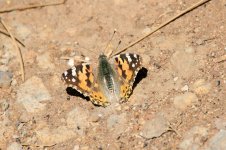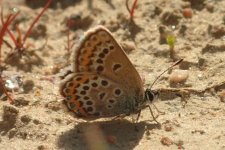Barred Wobbler
Well-known member
I was walking along a track at Las Lajas picnic area in Tenerife a couple of weeks ago, when a small - and I mean small - butterfly caught my eye as it flew past me and settled on the path.
Before it flew off I managed a photo, but as I focused I was surprised to see a painted lady, but not the normal-sized painted lady I an familiar with. This one was tiny. Think almost common blue tiny.
Am I missing something?
Before it flew off I managed a photo, but as I focused I was surprised to see a painted lady, but not the normal-sized painted lady I an familiar with. This one was tiny. Think almost common blue tiny.
Am I missing something?
Attachments
Last edited:







